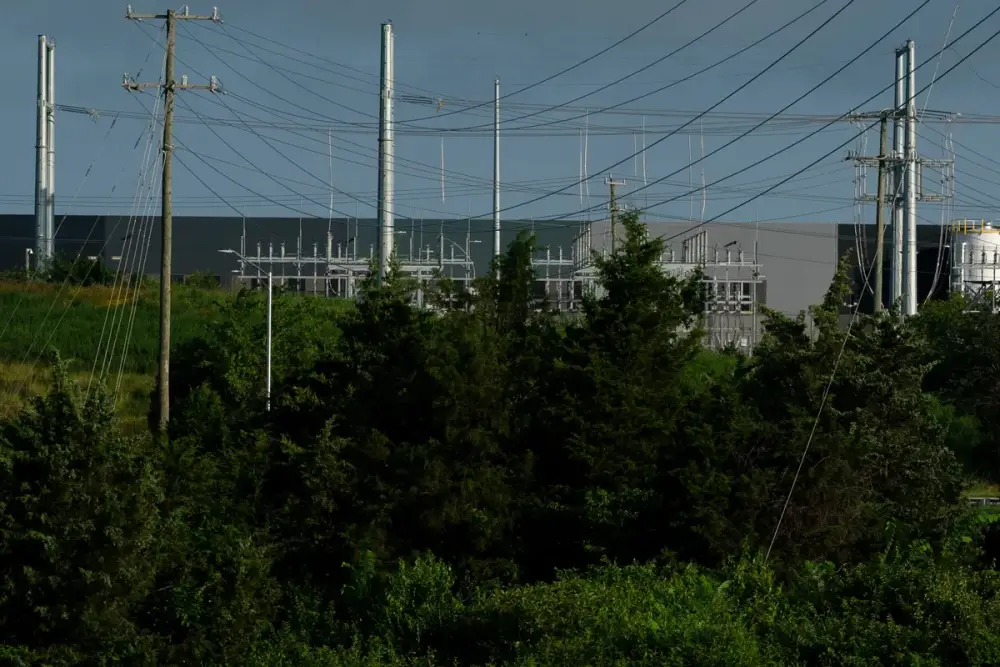
AI không chỉ là mã lệnh hay lý thuyết – mà là một câu chuyện vật lý với chi phí khổng lồ
-
AI ngày càng được nhận thức như một lĩnh vực vật lý, không chỉ là phần mềm hay ý tưởng trừu tượng. Việc triển khai AI phụ thuộc vào phần cứng, tiêu thụ điện lớn và hạ tầng trung tâm dữ liệu khổng lồ.
-
Các kỹ sư AI giống như những ngôi sao thể thao, vì khả năng tối ưu hóa thuật toán hoặc tiết kiệm điện năng có thể giúp công ty tiết kiệm hàng tỷ đô. Ví dụ, Ilya Sutskever từng sớm nhận ra tiềm năng của mô hình transformer, giúp định hình hướng đi của OpenAI.
-
Mức lương của các nhà nghiên cứu AI hàng đầu đang cạnh tranh với vận động viên chuyên nghiệp. Việc cải thiện hiệu suất hoặc tiêu hao năng lượng trong đào tạo mô hình được ví như “chạy nước rút" về vật lý.
-
Việc mở rộng AI gây áp lực lên nguồn cung năng lượng và thiết bị điện, khiến các lĩnh vực khác bị "crowded out". Ví dụ: một nhà phát triển bất động sản không thể mở quán cà phê drive-through vì thiếu thiết bị điện – do bị chiếm dụng bởi các trung tâm dữ liệu hoặc nhà máy được trợ cấp bởi chính phủ.
-
Hiệu ứng "crowding out" không chỉ đến từ chi tiêu công. Ngay cả AI – một ngành đầu tư phần lớn từ tư nhân – cũng góp phần gây khan hiếm nguồn lực như điện, thiết bị và lao động.
-
Bài viết cũng thảo luận cách AI đang đẩy chi phí điện tăng, có thể làm giảm năng suất kinh tế trong ngắn hạn, trước khi AI mang lại lợi ích lâu dài như mong đợi.
-
Cuối cùng, sự già hóa dân số và nhu cầu chăm sóc sức khỏe công khiến phần lớn nguồn lực bị điều hướng, làm nổi bật căng thẳng giữa các ưu tiên kinh tế.
📌 AI không còn là thứ "trên mây": nó tiêu thụ năng lượng lớn, phụ thuộc vào hạ tầng vật lý, và làm tăng áp lực lên nền kinh tế thực. Những kỹ sư như Ilya Sutskever đang định hình tương lai AI như vận động viên siêu sao, với mức lương cực cao do khả năng tối ưu hóa mô hình. Tuy nhiên, sự đầu tư ồ ạt vào AI đang gây hiệu ứng "crowding out", chiếm dụng tài nguyên của các ngành khác – từ thiết bị điện đến lao động – trước khi mang lại hiệu quả năng suất như kỳ vọng.
https://www.bloomberg.com/news/newsletters/2025-08-04/ai-is-really-a-physical-story
AI Is Really a Physical Story
Why the sport stars analogy works.
An Amazon Web Services data center in Manassas, Virginia, US.
An Amazon Web Services data center in Manassas, Virginia, US.Photographer: Nathan Howard/Bloomberg
By Tracy Alloway and Joe Weisenthal
August 4, 2025 at 4:26 PM UTC
You’re reading the Odd Lots newsletter.
Subscribe now to get Joe and Tracy’s daily newsletter on the newest market crazes.
Subscribe
Hello and welcome to the newsletter, a grab bag of daily content from the Odd Lots universe. Sometimes it's us, Joe Weisenthal and Tracy Alloway, bringing you our thoughts on the most recent developments in markets, finance and the economy. And sometimes it's contributions from our network of expert guests and sources. Whatever it is, we promise it will always be interesting.
If you like chatting with us, check out the Odd Lots Discord, where you can hang out and talk with us and with other listeners 24/7.
In the news
In case you haven’t seen this already, Odd Lots was profiled in yesterday’s New York Times! Both of us are very grateful to the NYT for their interest, and think the author Ben Wallace did a great job of capturing the spirit of the podcast and its fans.
A huge thanks to everyone who came out to our live show and said such kind words. A big shout-out to Bloomberg for giving us the space to try new things, and our lovely producers — Carmen Rodriguez, Dashiell Bennett, and Cale Brooks — for sherpa-ing a phenomenal year for the pod.
Here’s what Tracy’s thinking about
One of the defining aspects of modern life is its abstractness. Numbers are so big now that they are difficult to grasp (Meta is worth about $1.9 trillion. That’s $1,920,000,000,000). A huge portion of the economy’s value is derived from literal intangibles — it’s all about ideas and brands. Everything is online, everything is in the cloud, everything is virtual. It’s the unbearable lightness of software as a service.
This, I must admit, is pretty much how I’ve been thinking about AI. It all still feels very theoretical, even though I know that it objectively involves a bunch of ‘real’ things like huge amounts of compute, lots of electricity, and miles of data centers.
But after recording our latest episode, in which we speak to the brilliant cohosts of the TBPN show, John Coogan and Jordi Hays, I am really starting to internalize just how physical AI actually is. It’s one reason why the “AI researchers as superstar athletes” analogy work so well. An engineer at Google might not swing a bat or run wind sprints (though never say never, I guess. Tech campuses can get weird), but their main job is nevertheless about wrangling the complicated relationship that AI has with the world’s real, physical limits.
Here’s John Coogan, for instance, describing this dynamic in relation to Ilya Sutskever, one of the most influential figures in AI today:
“… Ilya Sutskever is really, he’s the top of our list for a variety of reasons … He is both coming up with new ways to implement AI algorithms, the way you train the model, but he’s also very good at, for a long time, identifying which, the shortest path in the tech tree. So there are branches of choices that you need to make as you develop the new AI models. And he was very early, while he was at OpenAI, he identified that the transformer paper from Google, he didn’t invent that, it was at Google, but the transformer technology was extremely important and that it had the ability to do remarkable things when scaled up massively. And so he was the driving force between kind of identifying the transformer as the correct path.”
Because building out AI is so darn expensive, an AI engineer able to make incremental improvements to speed and energy consumption can literally save a company billions of dollars and justify a salary that would make Juan Soto blush. In AI, you don’t need to score home runs, you just need to make runs more efficient (I’ll get my coat).
And with energy constraints looming ever larger for future projects, those physical bottlenecks are only expected to get tighter. So while AI might feel abstract — it’s code and research citations and a bunch of different interfaces all floating around the internet — at its core, AI is also silicon, power grids, and who can best manipulate the sheer physics of scale.
What Joe is thinking about today
On Friday I wrote about the somewhat unsettling state of the US economy right now, where you have (as Tracy wrote about above) a handful of people becoming stupendously rich on AI, a much broader set of people becoming wealthier (due to their exposure to AI-adjacent stocks), and then a stagnating labor force, where it looks like the only big sources of job growth are in health care and other related social services.
To step back for a moment, a term you hear a lot in discussions of fiscal policy is “crowding out.” There's this idea that if the government is spending money on something, it’s causing some other economic activity to disappear
I’ve never really loved the phrase, or maybe I think its usage is often sloppy. After all, government spending can crowd in business activity too. A public investment in infrastructure (like the Erie Canal) might induce private investment in adjacent land. And sometimes, there’s no crowding effect at all. In the wake of the 2008 financial crisis, when private sector balance sheets were in disrepair, the lack of nominal income flowing around the economy hampered investment and hiring.
But the core idea of crowding out is not entirely without merit. In a resource-constrained environment, labor and capital that gets allocated to place ‘X’ may mean less labor and capital to place ‘Y.’ An episode of the podcast I think about all the time was when we talked to real estate developer Chris Hatch about how he couldn’t open up drive through coffee locations because of the scarcity of electrical gear (which was probably a result of both the data center boom as well as new factories subsidized by the Inflation Reduction Act. And in fact, per the ISM on Friday, electrical gear in still in shortage).
So this is crowding out, but maybe it’s ok. A lot of people would say that reindustrialization and winning the AI race is more important than opening up a new Dutch Brothers location (sorry Chris). Others might say no, that the government (in subsidizing new industrialization) is distorting the market, and that market signals are demanding new Dutch Brothers. To each their own. But this is the real tension.
When it comes to all that hiring for health care and social assistance, people connect the dots to large government deficits, since much of this work is publicly financed in some way or another. And so they see crowding out. The government is plying the elderly directly with services or income support, and that’s constraining the availability of labor and resources for something else, whatever that is.
And I think that’s a real issue, and it’s at the heart of conversations about health care spending and Social Security. How can we provide seniors with some decent quality of life without putting undue burden on the more productive sectors of the economy? It’s a genuinely challenging question.
But to my mind, thecrowding out effect is an emergent phenomenon, regardless of how it’s financed. A society that gets older will, by physics, allocate more resources to eldercare. This is always the burden placed on the young, and the more inverted the demographic pyramid gets, the greater the burden.
And this is also true with AI, which by and large isn’t government funded. AI is driving scarcity of electrical goods. It’s putting upward pressure on the price of power itself. It seems plausible that given the sheer scale of AI investment right now, that it’s diminishing economy-wide productivity as resources get used, before the great efficiency payoff that everyone is hoping for.
Crowding out is a useful term. It’s just a shame that it’s almost exclusively used in conjunction with public sector deficits.
On the podcast
As mentioned, today we talked with TBPN co-hosts John Coogan and Jordi Hays. The two of them have a great livestreamed show that talks about the tech industry kind of like how ESPN covers sports, which is perfect for this moment of superstar AI salaries. We talk about the changing culture of Silicon Valley, and why it is that certain researchers are worth hundreds of millions of dollars.
Thảo luận
Follow Us
Tin phổ biến



